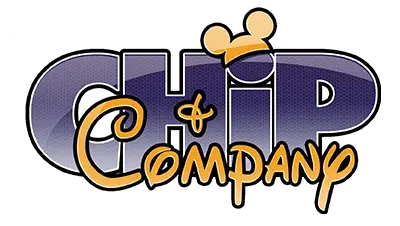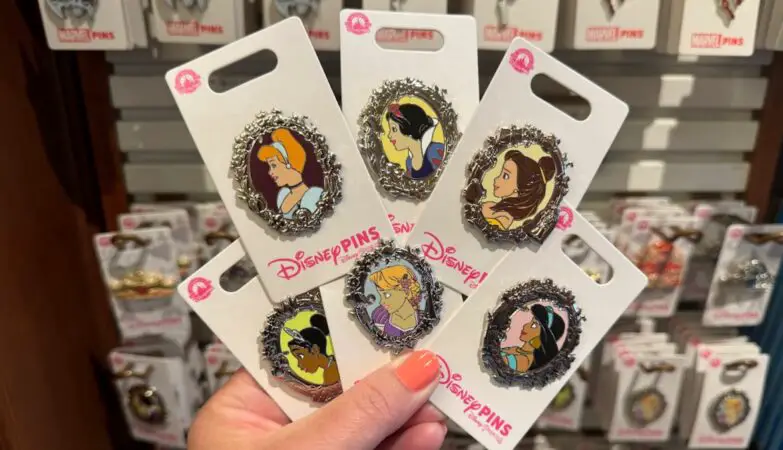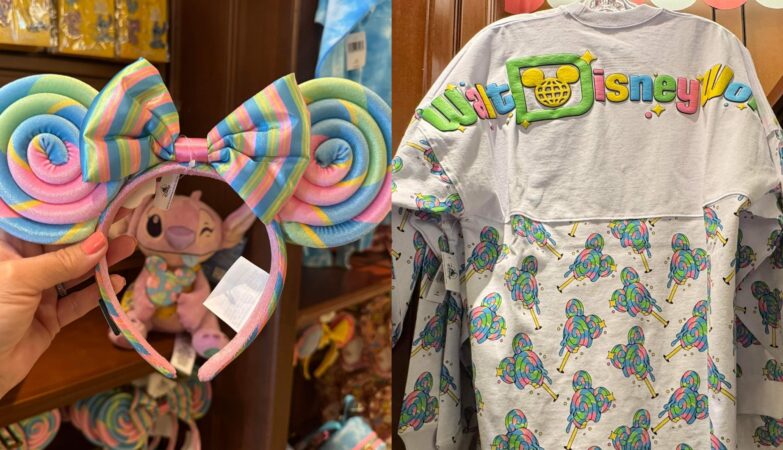Sorcerer Radio air-talent Eric Allen recently had the opportunity to chat with Bill George of ILM (Industrial Light & Magic) about his involvement in the film “I Am Number Four” as well as “Star Tours – The Adventure Continues.” Read on for fantastic details about his incredible career and projects.
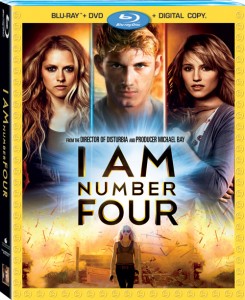
Bill George joined Industrial Light & Magic in 1981. Since then, he has worked as model shop supervisor, art director, matte painter, commercial director, and visual effects supervisor.
Some highlights of his career include miniature construction and design on Blade Runner, art direction and design for five of the Star Trek films, directing over 30 commercials at ILM and overseeing model construction on Ghostbusters 2 and Alive. In 1988, he received an Academy Award for Best Visual Effects for his work on Innerspace. In 2002, director Steven Spielberg entrusted George to update the beloved character E.T. using digital character animation for the 20th Anniversary Edition of E.T.: The Extra-Terrestrial.
George has gone on to earn nominations by the Academy of Motion Picture Arts and Sciences, the British Academy and the Visual Effects Society for work on Harry Potter and the Prisoner of Azkaban, as well as an additional VES nomination for Harry Potter and the Chamber of Secrets.
Of particular interest to Disney fans is his role as Visual Effects Supervisor on “Star Tours: The Adventures Continue” at Disneyland and Disney’s Hollywood Studios.
Q: How do you decide which movie you are going to work on?
A: Our executive staff reads a script and assigns a supervisor to it who they think is best suited for the project. Many times a studio who has worked with a specific supervisor in the past will request him or her.
Q: If you had to pick one scene that you liked the best that you worked on for I Am Number Four what would it be?
A: I really was happy with the destruction of the Mog commander. You can see in the special features section of the Blu-ray “becoming number 6” how little was shot and what was added. We shot practical explosions and sparks and bombs and there is nothing more fun than blowing stuff up! When we work on our shots we don’t have the final sound effects that are added right at the end and the sound design for that sequence was rockin’!
Q: There are tons of sci-fi movies out there. What did you try to put into I Am Number Four that would separate it from all other alien films?
A: Cute teenagers in love!
Q: How closely did you work with DJ Caruso?
A: On set the ILM team met with him every day. We kept him updated on the construction of Bernie and the Piken and I would discuss with him his plan for any of the plates we were shooting. Early on in post, we would travel down to LA for creative meetings and later at the end when things were super crazy we had video reviews. Early on I told DJ to think of Steve (The animaiton director) and I as the piken. Give us direction the way you would an actor and we’ll give you a performance. DJ directed every performance from the Piken and Bernie and he seemed to be having a blast doing it.
Q: Considering DJ Caruso hadn’t done a CGI-heavy film prior to I Am Number Four, did that put greater pressure on you to deliver the goods when it came to the effect sequences?
A: Part of my job was to make sure that DJ felt comfortable with doing creature effects. He is a super smart guy and has loads of post-production experience, so he didn’t have any trouble at all directing the Piken. In fact he really seemed to enjoy it. DJ was very clear about what he wanted in all the shots and that sure made my job a lot easier.
Q: The camera is always moving and the creatures really interact with walls, furniture etc – how were the scenes in the school shot to help you add the creatures later?
A: All of our tools are set up to make shooting the effects plates as free as possible for the director. It used to be that you had to use special cameras and motion control rigs that stunted progress and felt different. Whenever we can we want to make our shots to use the same techniques as the surrounding production footage. We also add into the shots additional camera movement to match what the creature ends up doing in the shots. A good cameraman has a innate ability to follow action and compose shots that they just do naturally. Of course it’s sometimes hard for them when there isn’t anything in frame!
Q: The film is based on the novel of the same name, which was written by Jobie Hughes and James Frey. Did you read the book before you began shooting the movie, and did the novel influence your work in any way?
A: I only read certain parts of the book that delt with our creature work but our blueprint was the script and DJ’s direction. Also, the book came out about halfway through shooting.One day on set I got to hang with James Frey and chatted about the books. That was a really unique experience for me, an effects goon.
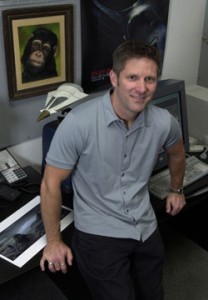
Q: “Number Four” featured some of the best photo-realistic creatures I’ve seen in a while. Why do you think your creatures look so real while those in other films don’t?
A: I would say that you have EXCELLENT taste! The main determining factor in a shot’s realism is how long the artist gets to refine it. Everyone uses the same basic tools but on many of the lower budget shows don’t have a lot of time to polish their shots. On average we usually do about 25 to 45 takes on any shot. We also have some AMAZING artists who work here!
Q: The creatures initially are fast and only shown in glimpses before we get to the end of the film – was it challenging to reveal them slowly like this?
A: This was a decision that DJ made to keep them more mysterious. You don’t want to give everything away too soon. So much of what you see and perceive comes down to lighting. It was fairly simple to keep the Piken dark so you didn’t see much. The editors had ultimate control over how much the audience would see by keeping the shots short.
Q: Have you heard anything about a possible sequel to the movie?
A: I heard a little squeek, but nothing concrete. We’ve got the Pikens standing by just in case.
Q: You’re working on Star Tours 2. What could you tell us about it? What will we see?
A: It opens this Friday! I’m heading to Orlando tomorrow (Wednesday) and I’m really jazzed. The new ride is in 3D and has a branching story line that changes randomly for each ride. The whole ride experience has been amped up. The only bad thing will be the lines…
Q: You worked on some Harry Potter movies. Now that the saga is quite over, what memories do you have of this experience ?
A: Creating Dobby was such an amazing experience because he was a major character in the second film. After we were done with the show I felt a real connection to him. One of my favorite memories on Potter 2 happened when we were shooting Daniel on his broom against a bluescreen for the Quidditch game. The stage hands were helping him get on the broom with a ladder. For some reason there was a label on the ladder that Daniel pulled of and did a little commercial for the ladder. “Hello, I’m Daniel Radciffe, when I need to get on my broom I prefer Kingsley ladders! Kingsley, when you need a lift!”
Q: What initially got you interested in visual effects? Was it a particular movie (i.e., Star Wars) or were you always interested in art/design?
A: As a kid I was into sci-fi TV shows like Lost in Space and Star Trek. When I was in high school Star Wars came out and blew my mind. I knew then what I wanted to do!
Q: You have a background in matte paintings and models. Do you miss that tangible type of special effects creation?
A: I am still able to use matte paintings and models in my projects, I just don’t do the actual work myself. I feel so lucky to have these amazing artists that are assigned to my shows. Going to dailies near the end of a show it feels like everyday is Christmas! You never know what cool shot is going to be there.
Q: One of your specialties used to be physical models (and good ones): Are miniatures now obsolete in modern special effects?
A: Sadly they are on the decline. Whenever I can I use models I will, because I think you can get a great result. BTW I still build models at home for fun.
Q: Do you ever approach a model/miniature with no clear vision in mind and just start putting parts together until you find a configuration you like?
A: Never. We always work out designs ahead of time in the much cheaper “sketch” form. At least this is how any major assets are handled. What does happen sometimes is we will ask for some background vehicles or ships and will tell the model makers “just wing it”. Having no clear vision sounds like trouble. These days more and more directors are super savy about effects and WANT to be involved.
Q: You’ve had many different positions with ILM over the years. What has been your favorite part of creating and executing film effects? Further what department do you think you’ve learned the most from?
A: Being an effects supervisor brings with it so many lessons and experiences. Dealing with the clients, team building, coming up with creative solutions, shooting plates and elements. It’s a role that requires a great variety of skills. It’s a challenge.
Q: What, in your experience, has been the movie that presented the greatest visual effects challenges and/or that you’re the proudest to have overcome?
A: One huge design challenge we faced was on Potter 3 and the Dementors. The challenge was to get across emotions and intent from creatures that didn’t have a face! In the long run I think that is what made them creepy. We had to rely on thor body language and the action of the tattered fabric that trails off of them.
Q: What’s a specific example of something you do that’s actually much harder than most people realize?
A: I believe that most people don’t realize the tremendous time and budget pressure we are under to deliver our work. People will comment “they should have done this or that..” not knowing that we do have limitations. Our goal is always to maximize our artists time, to stay on track and get the most out of the effects as possible.
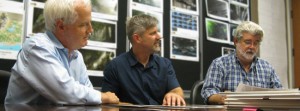
Q: I’ve noticed you’ve yet to do a 3D film. Is that something you’re interested in doing? Does the added depth of 3D make stunts and effects harder to pull off convincingly?
A: Actually, I have been working on Star Tours for the past 3 years that will be presented in 3D. I was drawn to the project for that reason, wanting to do something in 3D. It’s a very interesting project with a branching storyline that changes from ride to ride. My feeling is that doing a project in 3D means that you have another level of design you must consider. That fact that a project is in 3D will inform your choices as far as composition and focus. It’s a great payoff though for the extra effort.
Q: We’re now in an era of “all CGI”. How do you react with that?
A: The thing we used to dread hearing was “it looks like a model” Now we dread “It looks CGI”. I really LOVE working with miniatures but working with CG gives you a huge amount of contol that is hard to beat. Personally, I like mixing up techniques on a show to keep the audience guessing. In the shower scene in “Number Four” we used both CG water and practical water shot against black.
Q: How has CG evolved since you started?
A: The concepts have remained almost unchanged. The difference is that things like match-moving that used to be super hard have gotten easier. As machines and software get faster the shots have gotten more complex. Tools are always changing and getting more robust and our work has gotten more demanding.
Q: Do you think the advent of CGI has depreciated your profession or made it more imperative than ever?
A: Based on how many big money making films rely on effects work, I would say that effects have become even more important. Modern CGI is a tool that can help any director put his or her vision on film. The tools make almost anything possible.
Q: Despite the technology constantly improving, audiences are starting to grow savvy as to what is real and what is CGI in blockbuster movies. Do you see in-camera stunts making a comeback in the near future?
A: Most of the stunts in “Number Four” were done practically. There was a lot of wire work but they also had these AMAZING parcour guys who could do mind blowing stunts on their own. What you mention is so true though. Audiences are very sophisticated and they are looking to figure out our tricks. They certainly keep us on our toes.
Q: Who are some of your mentors and do you still refer/consult with them very often?
A: There have been may people who have influenced me throught my career. By just working with these people i was able to learn so much. Dennis Muren is one of them and he is still here at ILM. On “I am number Four” Dennis viewed the shower room sequence for us with fresh eyes and gave me a lot of great feedback for making the shots look better.
Q: Do you worry about what the critics may have to say about your movies, or do you strive to please your intended audiences?
A: It’s always nice to get positive feedback form critics but really the only people I “worry” about are the director and the producers at the studio. They hire us to create the shots for their movie and my goal is to make them happy.
Q: What is your favourite sci-fi movie? And the latest one you’ve watched?
A: I love 2001:A Space Odyssey. It’s unmatched in its technical and artistic achievement. Thor was the last sci-fi movie I saw and thought was awesome. BTW I usually enjoy other people’s films a lot more than the ones I work on because I can just sit back and enjoy them.
Q: Where do you keep your Oscars? What about your Emmys?
A: The Oscar sits on a shelf, kind of out of the way. The best thing about the award was it allowed me to move out of the ILM model shop and explore other departments, leading me to becoming an effects supervisor.
Bill George has made a tremendous contribution to the science fiction genre and I personally have been a fan of his work ever since Blade Runner. It was a privilege to participate in this Q&A session with him, which was made possible by a partnership between Sorcerer Radio and Chip and Company.
I Am Number Four is available now on Blu-Ray, DVD and movie download formats. Star Tours: The Adventures Continue is open now at Disney’s Hollywood Studios and opens June 3rd at Disneyland.
*Images courtesy of Walt Disney Studios Home Entertainment.

Let our friends at Destinations to Travel help you book your next Disney Vacation. They are the preferred Travel Agency of Chip and Company and Disney Addicts, and who we use ourselves.
Get started below for your FREE No Obligation Quote.
Book With our friends at Destinations to Travel
For the BEST in Disney, Universal, Dollywood, and SeaWorld Theme Park News, Entertainment, Merchandise & More follow us on, Facebook, Instagram, and Youtube. Don't forget to check out the Chip and Company Radio Network too!
